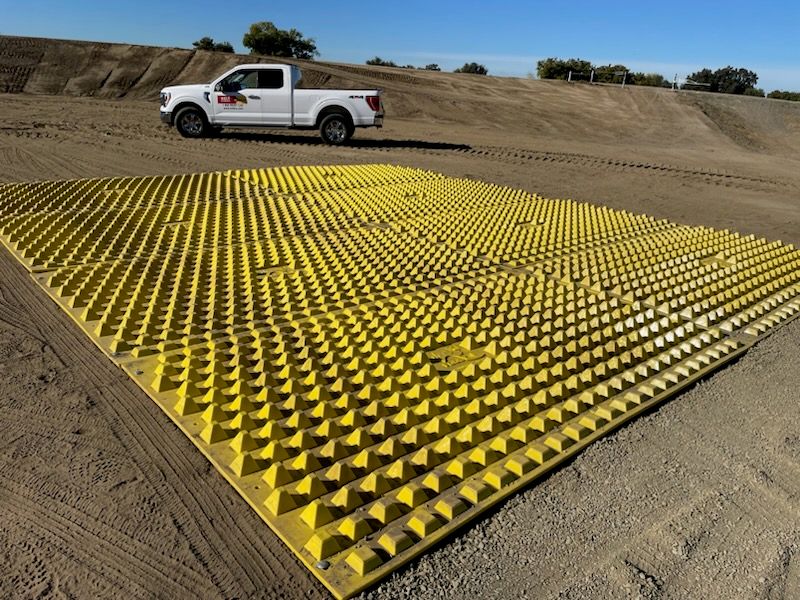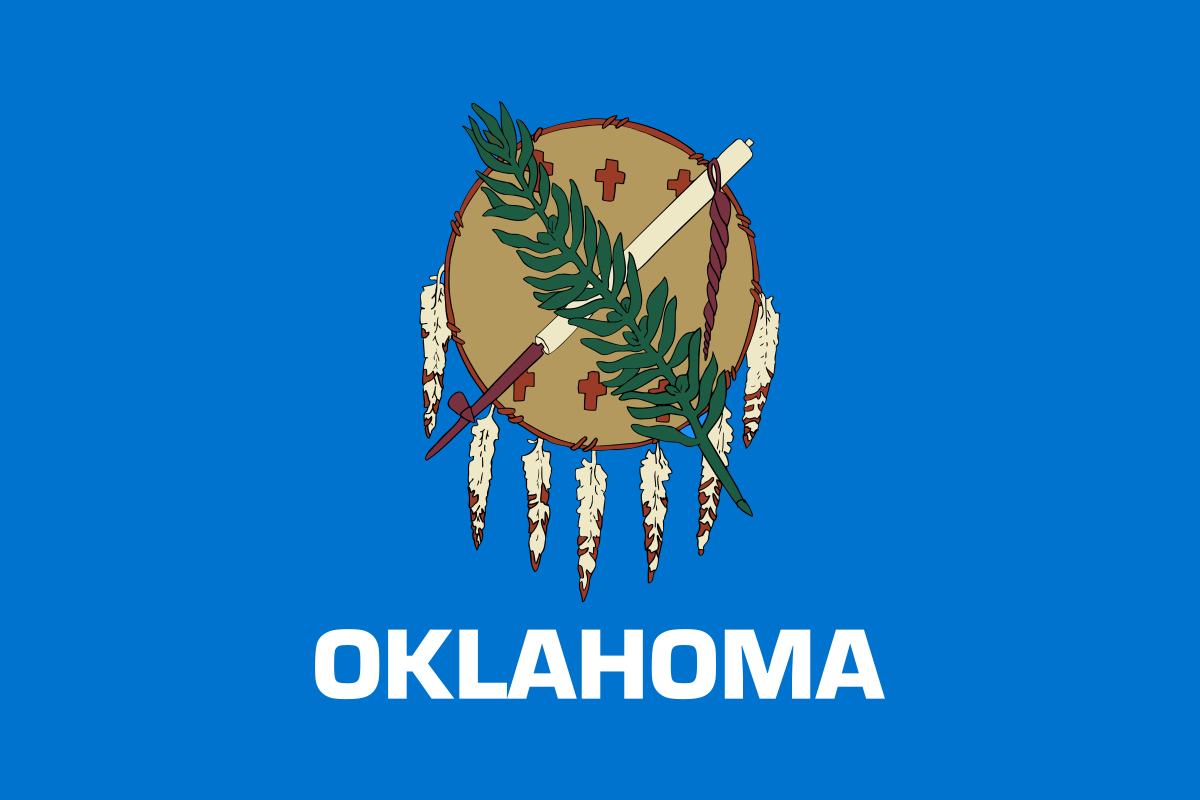Oklahoma Temporary Rock Construction Entrance/Exit Detail
The state of Oklahoma supports strong variety of industries including energy, aviation, food processing, and agriculture. A notable exporter of beef, Oklahoma holds second place in the nation for total beef cattle. Over 3000 lakes and ponds are scattered throughout nearly 70,000 sq. miles of land. Major water features including the Canadian River, Neosho River, and Arkansas River wind through the eastern side of the state providing water to the states residents and industry and replenishing the eastern water bodies including Eufaula Lake, the Grand Lake O' the Cherokees, and the Robert S. Kerr Reservoir. The southern border of the state rests on Lake Texoma, the states largest water body.
To protect these essential water resources and preserve the local ecosystems, the Clean Water Act establishes guidelines and restrictions on industrial, municipal and construction activities.
Oklahoma Department of Environmental Quality
The Federal Clean Water Act established the National Pollutant Discharge Elimination System (NPDES) Program which enforces protections for surface waters from all water discharges including construction, industrial and municipal activities. The program establishes a permit process for operators who plan to begin operations to ensure that measures are taken to preserve the local water quality and aquatic ecosystems. The measures taken can include devices, procedures, project scheduling, and other management practices. The end goal of the measures is to reduce pollutant levels to below the effluent limits established for the local water bodies.
In Oklahoma, the Department of Environmental Quality administers the program by reviewing applications, issuing permits operators and inspecting active sites to ensure that the techniques are well maintained. All sites which will disturb an area of one acre or greater are required to obtain permit coverage under the NPDES program. To obtain a permit, operators are required to submit a Notice of Intent and create a stormwater pollution prevention plan (SWP3) which outlines the projects potential sources of pollutants and specific control measures that will be used to minimize or mitigate the risks. Each of the techniques used are called Best Management Practices or BMPs.
Temporary Rock Construction Entrance/Exit BMP
One of the first BMPs to be installed on any construction project is the Temporary Rock Construction Entrance or Gravel Construction Pads which must be installed prior to beginning grading work. This BMP is also commonly referred to as a Gravel Construction Entrance or Gravel Construction Pad. The purpose of installing a Stabilized Construction Exit (Entrance) is to minimize sediment tracking from vehicles exiting the site which would otherwise be deposited onto the public rights-of-way and eventually enter storm drains. Sedimentation is the most common cause of water quality degradation, so effective trackout control techniques are a high priority of every job site.
While the Oklahoma DEP does not issue a BMP handbook, the DEQ SWP3 Template references the Oklahoma Department of Transportation (ODOT) and Oklahoma City’s BMP Manuals as resources for engineers to use when designing the site’s SWP3 plan. Both documents include examples of a traditional aggregate based solution with an optional wheel wash.
The Oklahoma City BMP Manual describes a Temporary Rock Construction Entrance / Exit and includes a variation for use on a steep grade. The construction entrance consists of a 20’ wide by 50’ long pad of gravel which is placed over a filter fabric. The gravel pad is a minimum of 6” thick of course aggregate 2” – 3” in size. A diversion ridge is places parallel to the road to prevent runoff from flowing onto the roadway, in addition, the construction entrance is installed to direct runoff towards the side of the gravel pad where it is directed into a sediment basin.
When this system is not sufficient to clean vehicle tires, another technique which can be used in combination is a wheel wash or wash station. As vehicle exit over the gravel construction entrance, the tires are washed by pressured water to remove sediment. The sediment laden water from the wheel wash station must be diverted to the sediment basin to prevent trackout.
The BMP Manual also includes a variation for temporary rock construction entrance/exit BMPs when installed on steep grades. The dimensions are reduced to a 12’ width and a cattle guard is installed in the middle of gravel entrance. The cattle guard is used in conjunction with a wash station and captures the runoff which is then diverted to a sediment basin. The notes indicate that each set of tires should be washed over the cattle guard.
In both the standard and steep grade designs, the entrances are constructed to allow a wide turning radius for vehicles exiting the site.
Construction Entrance Maintenance & Removal
Both designs require maintenance of the aggregate to ensure performance. The gravel pads will require regular top dressing and repairs, and the sediment basin and cattle guard may need to be cleaned. In addition, any aggregate, sediment or debris this is tracked onto the public right-of-way must be cleaned immediately before it can enter a storm drain. Street sweeping and regular maintenance of the entrance are required to ensure that sediment pollution is minimized.
The construction permit lists a minimum inspection and maintenance schedule which includes an inspection once every 14 calendar days as well as within 24 hours of the end of a storm event of 0.5 inches or greater, and within 24 hours of a discharge generated by snow-melt.
When the work is complete, the construction entrance will be removed for final stabilization. The fabric, rock, and other components such as the cattle guard and wheel wash system must be fully removed and replaced with top soil.
FODS Vehicle Trackout Control Mats
An effective and reusable technique for construction site trackout is the FODS Trackout Control Mat System. This system consists of a single layer of HDPE mats which are formed into pyramids on the surface. The pyramids work to deform vehicle tires and allow trapped debris and break loose, in addition, the mats also capture debris at the base of the pyramids where it will not contact vehicle tires. Each mat is 12’ wide and 7’ in the direction of travel and works as a modular system allowing contractors to build to fit the needs of each project.
In side-by-side studies, FODS system has been shown to reduce required street sweeping by 59% compared to traditional aggregate based systems. The effective system is also portable which can enable contractors to lower costs by reusing the system on multiple entrances on a linear project as well as on future projects. Installation of a standard 1x4 entrance can be completed in as little as 30 minutes. Mats can be installed on challenging environments such as steep grades, ungraded soil, and existing concrete and asphalt. Compared to traditional techniques, FODS enables better containment of sediment and while enabling responsive project planning.
FODS are maintained by removing sediment when it builds between the pyramids. Contractors commonly use a skid steer with a broom attachment to quickly clean the mats. A FODS shovel can also be used to remove debris manually. The durable FODS Trackout Control System can be relocated and reused over the 10+ year product service life.
Additional Resources:
Construction Stormwater Permit OKR10
Oklahoma City Stormwater BMP Manual
Oklahoma DOT Roadway Drainage Manual

